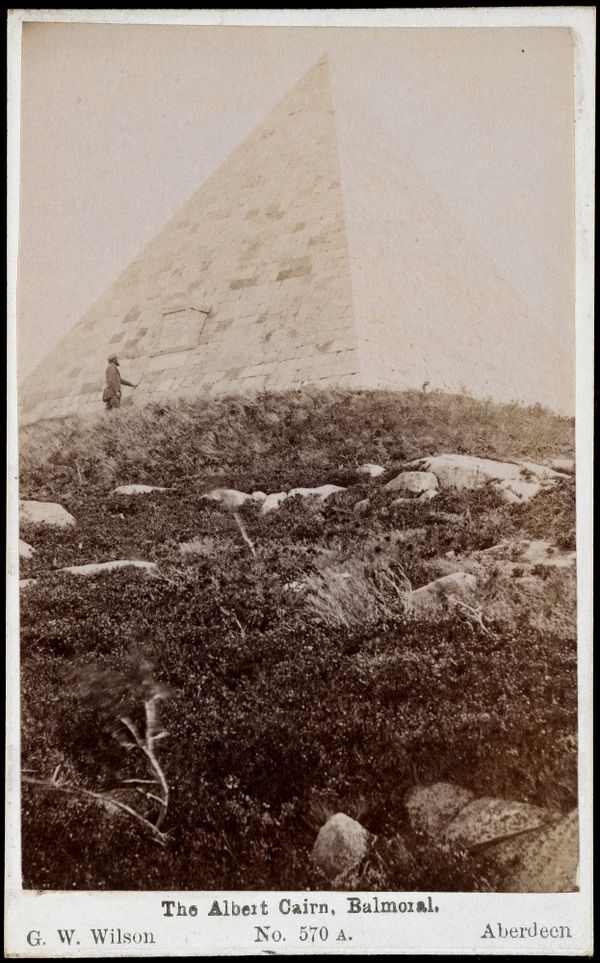

A Fascinating Discovery: The Pyramid-like Cairn Atop Scotland's Mountains
In August 2023, a video surfaced that caught the attention of many, showing what seemed to be a massive pyramid perched on a mountain in Scotland. This intriguing sight sparked curiosity and debate across social media platforms, especially X (formerly Twitter), where it garnered over 199,000 views. The narrator's excitement in the 23-second clip, stating, "There's a pyramid on top of a mountain in Scotland, and I didn't know this existed. Look at the size of that bad boy!" resonated with viewers and fueled speculation.
Initially posted on TikTok in 2021 with a caption reading "portal alert," the video reignited interest in the structure. Despite the conspiratorial undertones in some comments, the claim about the pyramid-like structure was verified as true; it genuinely depicted a remarkable human-made structure. However, it is essential to clarify that this formation is not a natural pyramid but rather a cairn—a mound of stones built by humans, often to commemorate the deceased.
Curiosity about this "pyramid" led many to research its origins. A simple search revealed that this structure is one of 11 cairns located near Balmoral Castle in Aberdeenshire, Scotland. The cairn, known as Prince Albert's Cairn, was commissioned by Queen Victoria in honor of her late husband, Prince Albert, after his passing in 1861. It stands approximately 35 feet tall, dominating the landscape and serving as a historical monument that reflects the love and grief of a widow.
 (Twitter user @illuminatibot)
(Twitter user @illuminatibot)
Understanding the Cairn's Historical Context
The cairn is situated on Craig an Lurachain, a mountain summit that is about a 20-minute walk from Balmoral Castle. This castle serves as a summer residence for the British royal family and is open to the public for tours. The cairn was built as a tribute to Prince Albert, highlighting its significance not just as a structure but as a memorial with deep emotional ties.
According to the Royal Collection Trust, which manages royal properties, Queen Victoria dedicated this memorial as "his broken-hearted widow." This poignant phrase encapsulates the enduring love she had for her husband, and the cairn itself serves as a lasting symbol of that love. The structure's height and visibility were also important, as Victoria intended it to be seen from afar, allowing others to remember Prince Albert.
Exploring the Cairn's Architectural Features
The cairn has been noted for its granite construction, with an inscribed date of August 21, 1862. An inset panel on the structure reads, "To the Beloved Memory of Prince Albert, the Great and Good Prince Consort, Erected by his Broken-hearted Widow, VICTORIA. R." This inscription not only honors Prince Albert but also reveals insights into the historical context of the time, reflecting the mourning practices of the Victorian era.
Visitors and historians alike have compared images of the cairn with other historical records and photographs. A side-by-side analysis between the viral TikTok footage and official tourism images shows a remarkable similarity, affirming the cairn's status as a notable landmark in the region. This structure is not just a tourist attraction; it's a piece of history that tells a story of love, loss, and remembrance.
 A photograph of the cairn in 1864, three years after it was erected. (Royal Collection Trust)
A photograph of the cairn in 1864, three years after it was erected. (Royal Collection Trust)
Key Takeaways
What You Will Learn
- The pyramid-like structure in Scotland is actually a human-made cairn, not a natural formation.
- This cairn was commissioned by Queen Victoria as a memorial for her husband, Prince Albert.
- The structure stands at approximately 35 feet tall and is located on Craig an Lurachain near Balmoral Castle.
- Historical inscriptions on the cairn provide insight into Victorian mourning practices and the personal history of the royal family.
Conclusion: A Lasting Legacy
The discovery of the cairn has sparked renewed interest in Scottish history, reminding us of the personal stories behind historical landmarks. It serves as a testament to the enduring nature of love and remembrance, inviting visitors to reflect on the past while appreciating the beauty of Scotland's landscapes. As we explore such monuments, we gain a deeper understanding of the cultural and emotional narratives that shape our world.
As you plan your next visit to Scotland, consider making a trip to see Prince Albert's Cairn. Not only will you witness a stunning view, but you'll also step into a poignant piece of history that continues to resonate with those who seek to understand the bonds of love that transcend time.
The Controversial Furby Ban By The NSA: Myths And Facts Uncovered
Exploring The Truth Behind The Claim: Are Prince And Haywood Nelson Brothers?
The Curious Case Of Leo: The Taxidermy Lion Of Gripsholm Castle



